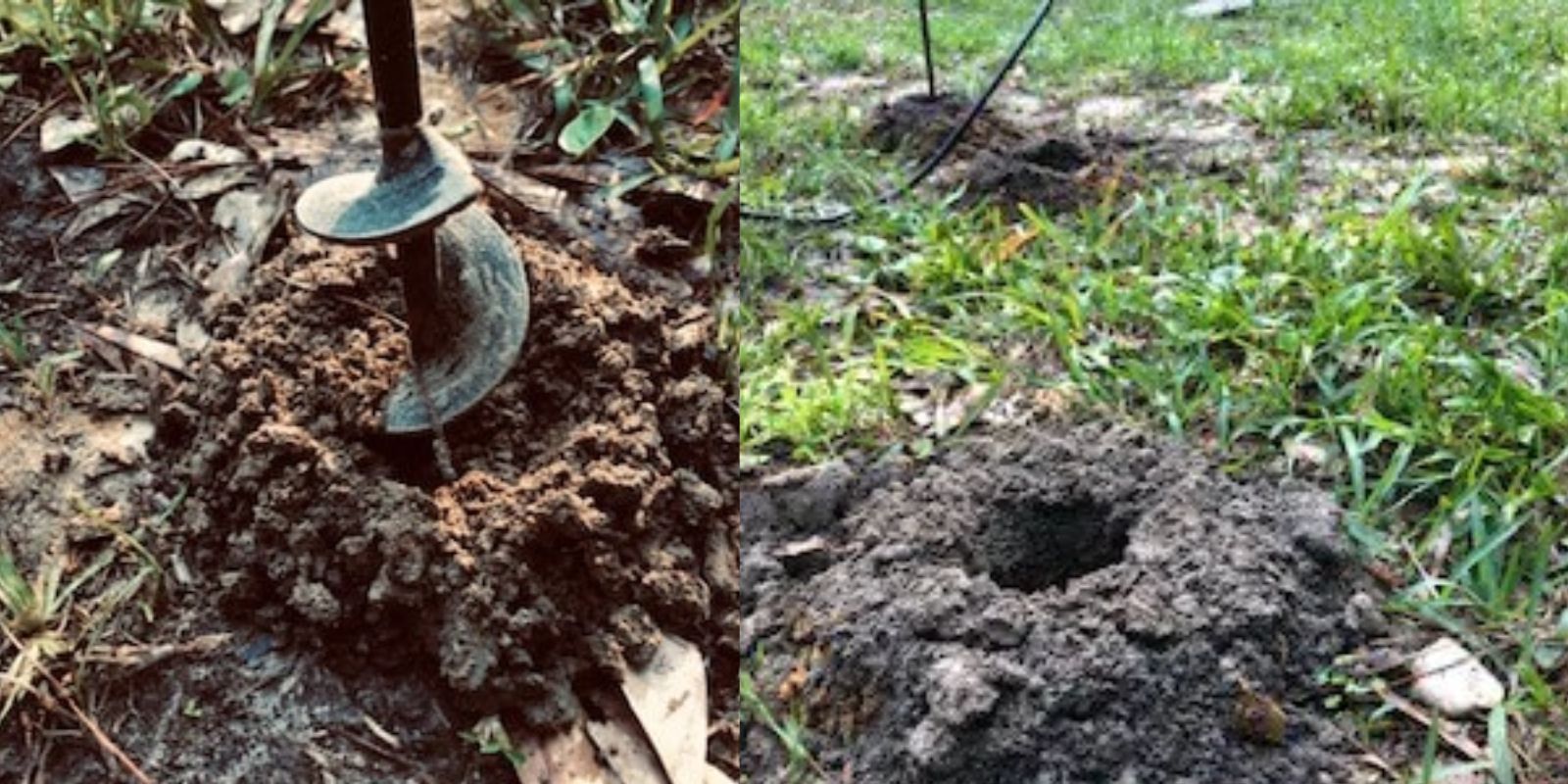Clay soil is notorious for its challenges in gardening. Its dense and compact structure makes it difficult for water and air to penetrate, resulting in poor drainage and limited root growth. However, a simple yet revolutionary method—drilling holes in clay soil—has emerged as an effective solution. This technique has been tested over two years, delivering remarkable results in transforming hard clay into a fertile medium for healthy plants. Let’s dive into the details of this method, its benefits, and a step-by-step guide to get started.
Understanding Clay Soil
Clay soil is composed of tiny mineral particles that pack tightly together, leaving minimal space for water, air, and roots to move through. While it’s rich in nutrients, its structure often hinders plant growth due to:
- Poor Drainage: Excess water tends to pool on the surface, leading to waterlogging.
- Compaction: The dense soil restricts root penetration and growth.
- Limited Aeration: Roots struggle to access oxygen, essential for healthy growth.
- Seasonal Extremes: Clay soil becomes hard as concrete during droughts and sticky during wet conditions.
Why Drilling Holes Works
Drilling holes in clay soil addresses its structural issues by:
- Improving Drainage: Holes allow water to percolate deep into the soil, preventing surface pooling.
- Enhancing Aeration: The created voids introduce oxygen to the root zone.
- Facilitating Root Growth: Roots find it easier to expand through amended soil.
- Reducing Compaction: Filling holes with organic matter and sand loosens the surrounding soil over time.
After two years of implementing this technique, gardeners have observed healthier plants, better drainage, and easier soil management.
Step-by-Step Guide to Drilling Holes in Clay Soil
1. Gather the Right Tools
To get started, you’ll need:
- A power drill with a long auger bit (12-18 inches recommended).
- Compost, sand, or gypsum as soil amendments.
- A garden hose or watering can.
- Markers or stakes to plan hole placement.
2. Plan Your Hole Layout
Determine where to drill holes based on your planting needs. For garden beds:
- Space holes 12-18 inches apart in a grid pattern.
- For tree planting, focus on areas around the root zone.
3. Drill the Holes
- Drill each hole 12-18 inches deep to reach the compacted layer.
- Make holes wider if you plan to add significant amendments.
- Ensure the drill bit remains perpendicular to the ground for consistent depth.
4. Fill the Holes
Once the holes are drilled:
- Add organic matter like compost to enrich the soil.
- Incorporate sand or gypsum to improve drainage and reduce compaction.
- Mix the materials lightly with the surrounding soil for better integration.
5. Water the Soil
After filling the holes, water thoroughly to:
- Help the amendments settle into the soil.
- Promote microbial activity and nutrient release.
6. Monitor Progress
- Observe changes in drainage and plant growth over time.
- Repeat the process annually or as needed for sustained results.
Benefits of Drilling Holes in Clay Soil
1. Enhanced Soil Structure
Drilling creates pathways for water and roots, breaking up compaction and improving overall soil health.
2. Better Plant Growth
Amended soil provides roots with easier access to nutrients, water, and oxygen, resulting in stronger plants.
3. Reduced Waterlogging
Holes prevent standing water by channeling excess moisture into deeper layers.
4. Eco-Friendly Solution
This method avoids the need for chemical soil conditioners, relying on natural amendments to improve soil quality.
Common Mistakes to Avoid
- Inconsistent Hole Placement: Uneven spacing can lead to uneven results. Stick to a grid pattern for uniform improvement.
- Overfilling with Sand: Excessive sand can create drainage layers that hinder water movement.
- Skipping Watering: Proper hydration is crucial for amendments to integrate effectively.
- Using the Wrong Drill Bit: Ensure the bit is long and sturdy enough to penetrate compacted clay.
Additional Tips for Success
- Amend the Surface: Apply a layer of organic mulch or compost across the bed for added benefits.
- Test Soil pH: Adjust pH with lime or sulfur if needed for specific plants.
- Incorporate Cover Crops: Grow cover crops like clover to naturally aerate and enrich the soil.
- Repeat Regularly: Annual drilling maintains improvements and prevents soil from reverting to its compacted state.
Long-Term Results: What to Expect
After two years of consistent implementation, gardeners have reported:
- Improved Drainage: Waterlogging issues have significantly decreased.
- Healthier Plants: Enhanced root systems and increased growth rates.
- Easier Maintenance: Soil becomes more workable, reducing the effort needed for planting and weeding.
- Higher Yields: Fruits and vegetables thrive in the improved soil conditions.
Conclusion
Drilling holes in clay soil is a simple, cost-effective, and transformative gardening technique. By addressing the challenges of compaction, poor drainage, and limited aeration, this method paves the way for healthier plants and more productive gardens. With patience and regular maintenance, you’ll turn even the toughest clay into fertile ground.
💬 Have you tried this method in your garden? Share your results and tips below!
#ClaySoilSolutions #HealthySoil #GardeningTips #EcoFriendlyGardening #SoilAmendments #DIYGardenHacks

